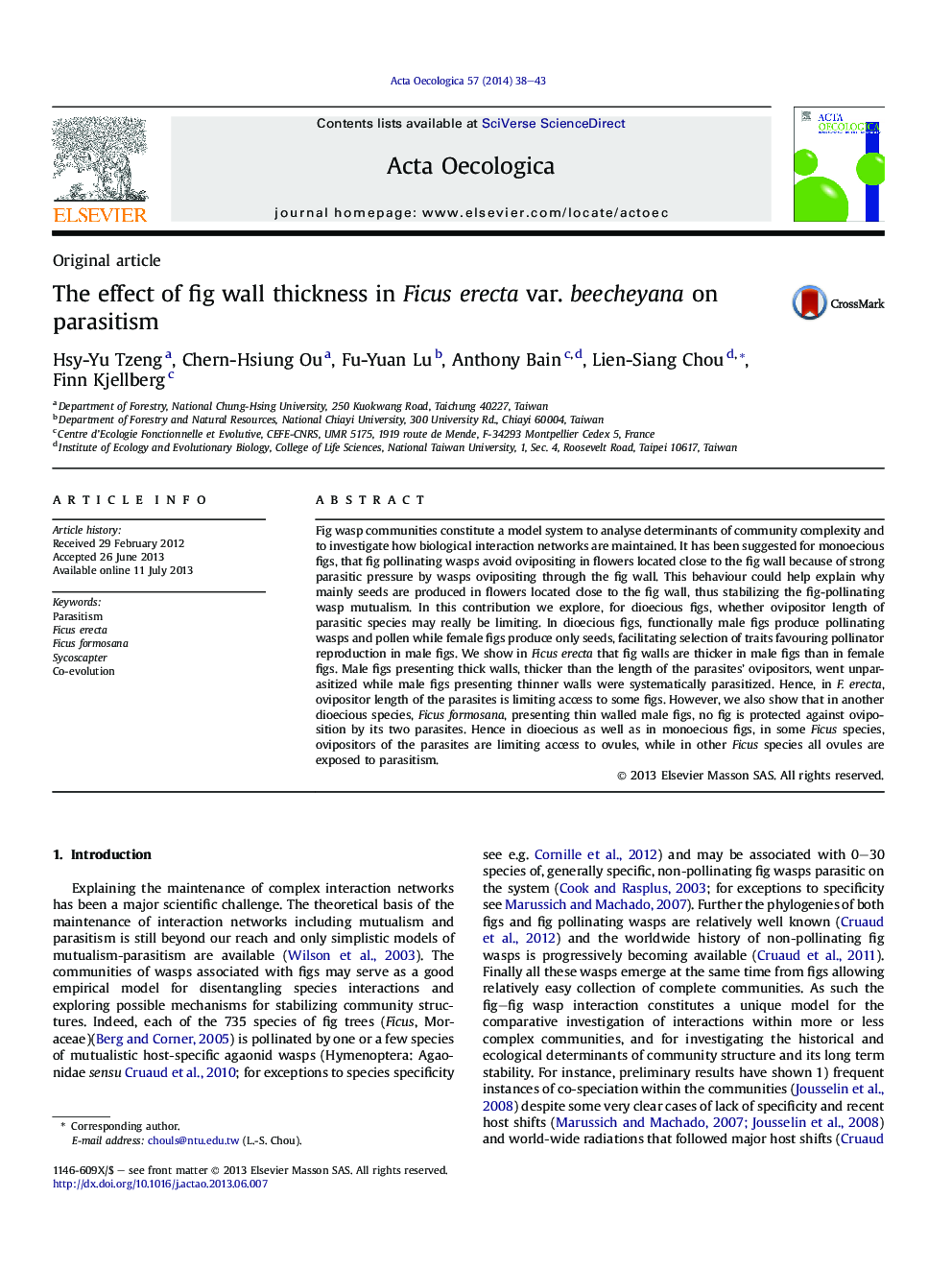| Article ID | Journal | Published Year | Pages | File Type |
|---|---|---|---|---|
| 4381036 | Acta Oecologica | 2014 | 6 Pages |
•Fig characteristics show sexual differentiation between male and female trees.•Male fig wall thickness as an anti-predation mechanism to parasitoid wasps.•The thin-wall fig of Ficus formosana undergoes heavier parasitism than Ficus erecta var. beecheyana.
Fig wasp communities constitute a model system to analyse determinants of community complexity and to investigate how biological interaction networks are maintained. It has been suggested for monoecious figs, that fig pollinating wasps avoid ovipositing in flowers located close to the fig wall because of strong parasitic pressure by wasps ovipositing through the fig wall. This behaviour could help explain why mainly seeds are produced in flowers located close to the fig wall, thus stabilizing the fig-pollinating wasp mutualism. In this contribution we explore, for dioecious figs, whether ovipositor length of parasitic species may really be limiting. In dioecious figs, functionally male figs produce pollinating wasps and pollen while female figs produce only seeds, facilitating selection of traits favouring pollinator reproduction in male figs. We show in Ficus erecta that fig walls are thicker in male figs than in female figs. Male figs presenting thick walls, thicker than the length of the parasites' ovipositors, went unparasitized while male figs presenting thinner walls were systematically parasitized. Hence, in F. erecta, ovipositor length of the parasites is limiting access to some figs. However, we also show that in another dioecious species, Ficus formosana, presenting thin walled male figs, no fig is protected against oviposition by its two parasites. Hence in dioecious as well as in monoecious figs, in some Ficus species, ovipositors of the parasites are limiting access to ovules, while in other Ficus species all ovules are exposed to parasitism.
